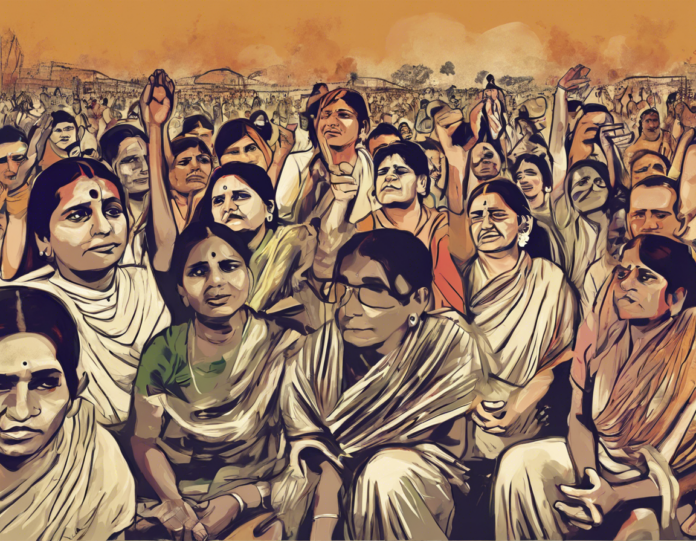Introduction:
The Narmada River, one of the major rivers in India, is not just a water body but a lifeline for millions of people living in the states of Madhya Pradesh, Maharashtra, and Gujarat. Over the years, the river has faced numerous threats due to unchecked industrialization, pollution, deforestation, and most significantly, large dams. One of the most notable movements that aimed to save the Narmada River and its ecosystems from destruction is the Narmada Bachao Andolan (NBA) movement.
History of the Narmada Bachao Andolan Movement:
The Narmada Bachao Andolan movement, which translates to ‘Save the Narmada Movement,’ was founded in the early 1980s by environmentalists, social activists, and local communities living along the Narmada River. The primary aim of the movement was to protest against the construction of a series of large dams on the Narmada River, including the Sardar Sarovar Dam.
Importance of the Narmada River:
The Narmada River is not just a water source for irrigation and drinking water but also holds immense cultural and historical significance for the people living in the region. The river is considered sacred by many communities, and its banks are home to diverse flora and fauna.
Impact of Large Dams on the Narmada River:
The construction of large dams on the Narmada River, such as the Sardar Sarovar Dam, has had severe repercussions on the environment and the local communities. These dams have led to the displacement of thousands of people, loss of biodiversity, submergence of fertile land, and disruption of the natural flow of the river.
Role of the Narmada Bachao Andolan Movement:
The Narmada Bachao Andolan movement played a pivotal role in raising awareness about the adverse impacts of large dams on the Narmada River and its inhabitants. Through protests, rallies, hunger strikes, and legal battles, the activists of NBA brought the issue to national and international attention.
Achievements of the Narmada Bachao Andolan Movement:
One of the major achievements of the Narmada Bachao Andolan movement was the reevaluation of the environmental and social costs of the Sardar Sarovar Dam project. The movement also highlighted the need for more sustainable and inclusive development practices that respect the rights of marginalized communities and protect the environment.
Challenges and Controversies:
While the Narmada Bachao Andolan movement achieved significant milestones in raising awareness about the Narmada River, it also faced challenges and controversies. The movement was criticized for its methods of protest, accused of stalling development projects, and faced backlash from government authorities and pro-dam lobbies.
Lessons Learned and Future Outlook:
The Narmada Bachao Andolan movement serves as a powerful example of grassroots activism and the importance of community involvement in environmental conservation efforts. The lessons learned from this movement can guide future initiatives to protect rivers and ecosystems from unsustainable development practices.
Conclusion:
In conclusion, the Narmada Bachao Andolan movement remains a symbol of resistance against destructive development projects that threaten the environment and the livelihoods of local communities. The movement’s struggles and achievements continue to inspire environmental activists and advocates for sustainable development practices. The legacy of the Narmada Bachao Andolan serves as a reminder of the ongoing battle to protect our natural resources for future generations.
Frequently Asked Questions (FAQs):
1. What is the main objective of the Narmada Bachao Andolan movement?
The primary goal of the Narmada Bachao Andolan movement is to protest against the construction of large dams on the Narmada River and advocate for sustainable and inclusive development practices that respect the rights of local communities and protect the environment.
2. What are some of the key environmental issues associated with the construction of large dams on the Narmada River?
The construction of large dams on the Narmada River has led to the displacement of thousands of people, loss of biodiversity, submergence of fertile land, and disruption of the natural flow of the river, causing severe environmental degradation.
3. How did the Narmada Bachao Andolan movement raise awareness about the Narmada River issue?
The Narmada Bachao Andolan movement utilized various strategies such as protests, rallies, hunger strikes, legal battles, and media campaigns to raise awareness about the impacts of large dams on the Narmada River and its communities.
4. What were some of the major achievements of the Narmada Bachao Andolan movement?
Some of the significant achievements of the Narmada Bachao Andolan movement include the reevaluation of the environmental and social costs of the Sardar Sarovar Dam project, highlighting the need for sustainable development practices and community involvement in decision-making processes.
5. How can individuals support the cause of saving the Narmada River and other rivers in India?
Individuals can support the cause of saving the Narmada River and other rivers in India by raising awareness about environmental issues, practicing sustainable water management, supporting local communities fighting against destructive projects, and advocating for policies that prioritize environmental conservation.
